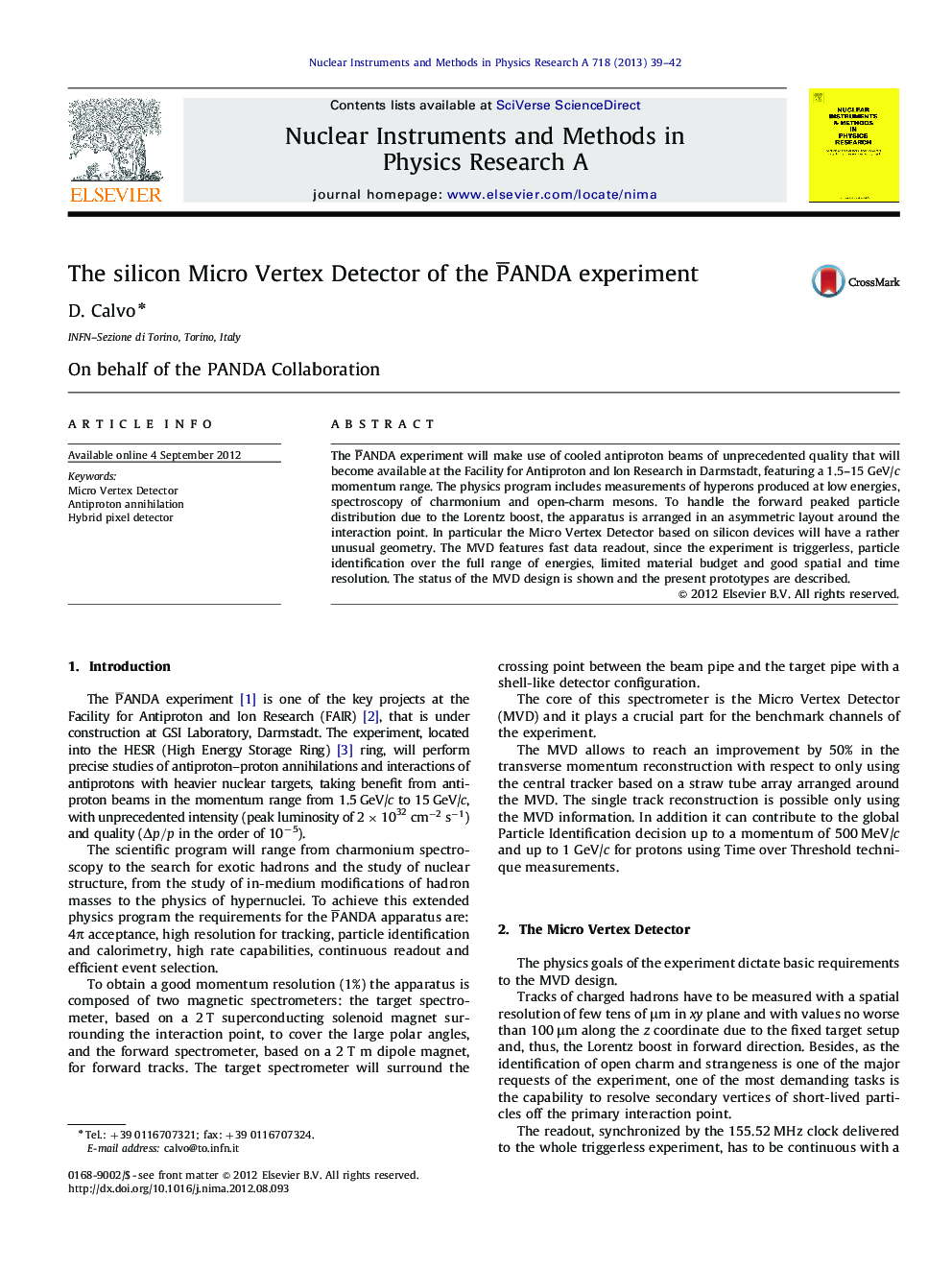| Article ID | Journal | Published Year | Pages | File Type |
|---|---|---|---|---|
| 8179670 | Nuclear Instruments and Methods in Physics Research Section A: Accelerators, Spectrometers, Detectors and Associated Equipment | 2013 | 4 Pages |
Abstract
The P¯ANDA experiment will make use of cooled antiproton beams of unprecedented quality that will become available at the Facility for Antiproton and Ion Research in Darmstadt, featuring a 1.5-15 GeV/c momentum range. The physics program includes measurements of hyperons produced at low energies, spectroscopy of charmonium and open-charm mesons. To handle the forward peaked particle distribution due to the Lorentz boost, the apparatus is arranged in an asymmetric layout around the interaction point. In particular the Micro Vertex Detector based on silicon devices will have a rather unusual geometry. The MVD features fast data readout, since the experiment is triggerless, particle identification over the full range of energies, limited material budget and good spatial and time resolution. The status of the MVD design is shown and the present prototypes are described.
Related Topics
Physical Sciences and Engineering
Physics and Astronomy
Instrumentation
Authors
D. Calvo, On behalf of the PANDA Collaboration On behalf of the PANDA Collaboration,
